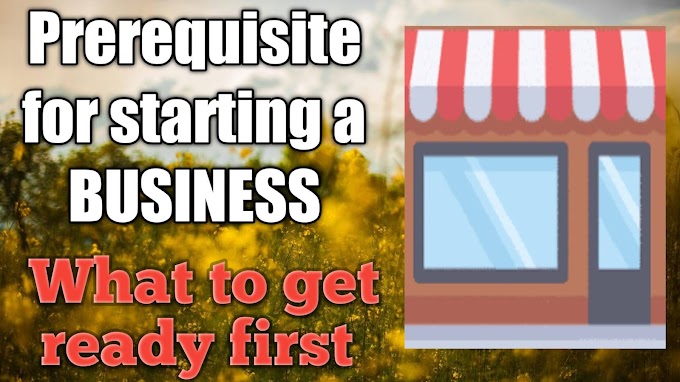Business Plan Writing Technique
A business plan is important to any entrepreneur because a good one can help you get where you want to go. It is the roadmap to achieving your business goals. A good business plan makes it clear why your idea will work and guide you along the path to success. So let me share with you a complete guide on writing business plans.
1. Executive Summary
Introduction to the Guide The following guide includes an executive summary, a detailed version of my alternative business plan, and further additions for specific types of businesses. It is a broad view of your company and what you are going to write in the document. This part here should be a short but punchy quip that encapsulates the main basis for your idea of what this business plan will contain.
Key Components:
– Business Idea — tell what your business does and why it is important to you.
Business Objectives -Specify your short-term and long-term goals.
Market Opportunity: Briefly describe the market & buyer persona.
For example, this could be a summary of your projections and funding requirements:
Company Information – List the name of your company, location, and key personnel.
2. Company Description
Business Structure- This section talks about your business. What is your business model and structure as well as the key factors that differentiate you from anybody else?
Components:
Business Model: Explain what your business is and how it makes money.
Products or Services — Outline what you provide and why it can help your customers.
Legal Structure: This is where you specify your business' legal structure — e.g., sole proprietorship, partnership, llcitéd company.
3. Market Research and Analysis
Know The Market: You should research enough about your sector, the target market, and competition. This section is where demonstrate your understanding of the market and provide evidence that there will be demand for your business.
Components:
Industry Overview: Share the latest industry trends, potential for growth, and key players in the sector.
Target Market: This is your ideal customer – demographic and demographic information about the audience you serve.
Competitive Analysis: This will require researching your competitors, their strengths and weaknesses, as well as the competitive edge you operationally provide to them.
– Market Needs: Describe in detail your prospective market needs and what they are for which you can offer solutions to them.
4. Organization and Management
Organization: structure of the plan, hierarchy, etc., and management team. In this section, we just provide insights into how expert your team can be and to what extent.
Components:
Organizational Chart – A graphical presentation that will show the hierarchy of your business.
Management Team: Biographies of the management team detailing qualifications and what they do
Ownership Structure: Explain who owns the business and in what proportion ownership is distributed
Advisors — if you have any advisors or consultants backing your business.
5. Products or Services
Product / Service: This is the section that dives deep into explaining what you are selling or offering.
Components:
Product/Service Description: Outline your products or services including specifics, pricing, and what sets them apart from others
Development Stage– Talk about where your product or service is at its stage of development.
- Intellectual Property: Describe any patents, trademarks, or copyrights pertinent to your products?
Research and Development: Detail proprietary R&D functions, Research activities pool research in return for equity principles to their development eg future product or services divestment
6. Marketing and Sales Strategy
Market Approach, outlining how you expect to acquire and keep customers This should include your marketing and sales strategies & tactics.
Components:
Marketing Plan: Explain in detail your marketing strategies. Include branding, advertising, and promotions.
Sales Strategy: Provide an overview of how you are going to sell (sale tactics, sales channels, and the sale process)
Customer Acquisition: Your strategy for acquiring and keeping customers.
– Pricing Strategy: Outline your pricing model and compare it with competitors.
7. Operational Plan
Operations: You will create a detailed plan of the day-to-day management, operation, and function of your business.
Components:
Operational Workflow — Outline how the setup of your operation looks along with each of the details like production, service delivery, and logistics.
Facilities and Equipment — Explain the facilities, equipment, and technology needed to operate your business.
Suppliers and Vendors — or the importance of your operations in relation to key suppliers/ vendors
Control The Quality Outline your procedures for assuring the standards of products or services -This can be achieved by including a Section with quality control checkpoints.
8. Financial Plan
A picture of your business from a financial point of view, and A more balanced idea about the future as it relates to numbers. You need it to raise funding and keep the money in your business running smoothly.
Components:
How you will make money based on your products, including pricing and sales forecasts.
Funding Requirements — Specify the amount of funding you require and how it will be used.
Financial Statements: The particular company's financial statements are used to support the sep report, e. g income statement projections, balances, and cash flow from operations.
Break-even Analysis: show when your company will be profitable using a break-even analysis.
9. Appendix
Appendix: Provides extra detail and evidence to back up your main sections, Supporting Documents.
Components:
Resumes of Key Team Members: Provide in-depth resumes on the management team.
Legal Documents—— Include any applicable legal documents like your business license and your contract.
– Market Research Data – Offer extensive market research reports and data.
- Further Financial Information: More Supplementary fiscal figures or prophecies.
Final Thoughts
Your business plan begins as a live document that can change at any time. It keeps you on track and will help make sure your plan is up-to-date. Do you see your business plan as not just a road map for the business but also something that can secure investors and guide high-level strategic decisions? The more complete you are with all the sections, and specific details under each section must be provided will help strengthen your business down the line.









0 Comments